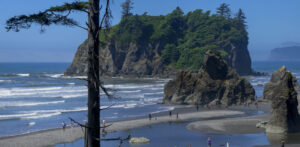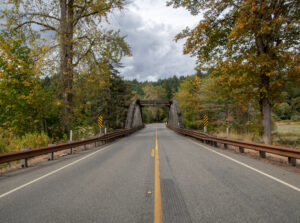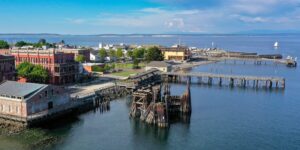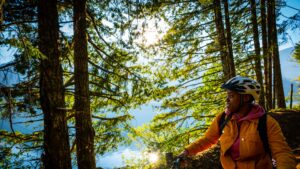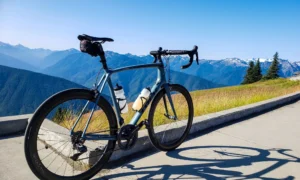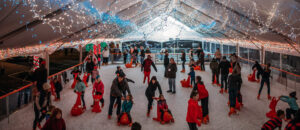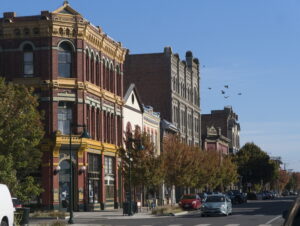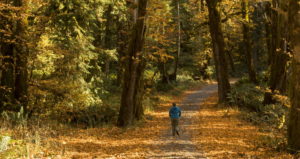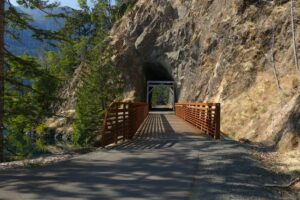Story and photos by guest-blogger Anne Norup
A cluster of walking sticks leaned up against the trailhead sign at Cape Flattery. Some were adorned with feathers, bright cording and colorful beads. Others were left in their natural state with branches sheared off to give a smooth finish. We each grabbed one as if the sticks called to us personally. My friend’s was decorated. Mine wasn’t and looked like it was from a young sapling. Our Makah guide Vince’s stick was older, weathered and appeared to have been in use for some time.
A crisp, spring breeze greeted us as the three of us headed west on the trail, confirming the good decision to wear warm coats and bring gloves. Salt air tickled our noses and the distant shushing sounds from the surf called to us, quickening our steps in anticipation of what lay ahead.
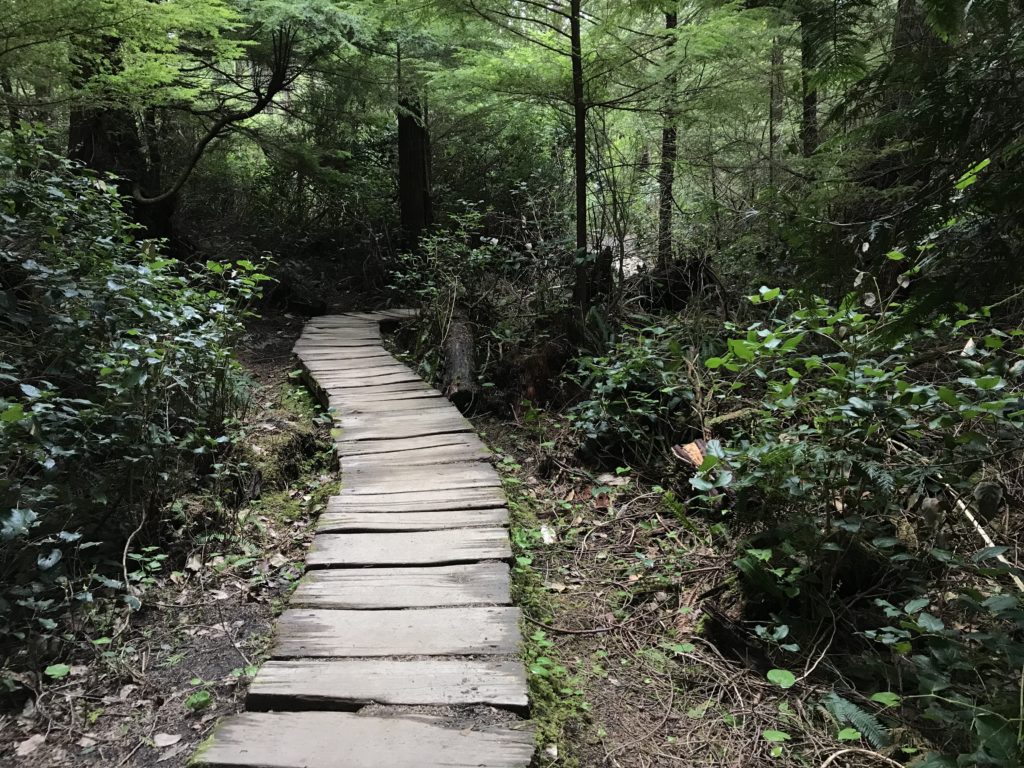
Cape Flattery Trail
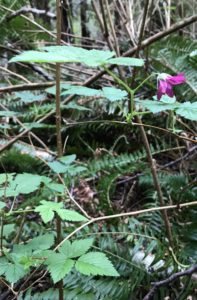
Pink salmonberry blooms along Cape Flattery Trail
Down the path, careful not to trip over roots and branches from recent storms, we were soon traversing a hand-crafted boardwalk, elevating us over the damp soil below. Skunk cabbage was in bloom, along with delicate trillium flowers, and salal framed the walkway.
We walked under a canopy of towering cedar and fir, only to look up and discover two bald eagles soaring overhead, their high-pitched, whistling call echoing through the forest. “In our culture, it’s considered good luck when eagles fly above you,” Vince said. We felt very lucky indeed.
Further on, we caught a filtered glimpse of the ocean beyond. As we walked up onto the viewing platform, we collectively caught our breath at the spectacular sight. Below us, the emerald sea churned with white caps colliding onto themselves sending sea spray skyward. Surf thundered onto ancient rocks, having carved out caves over the centuries.
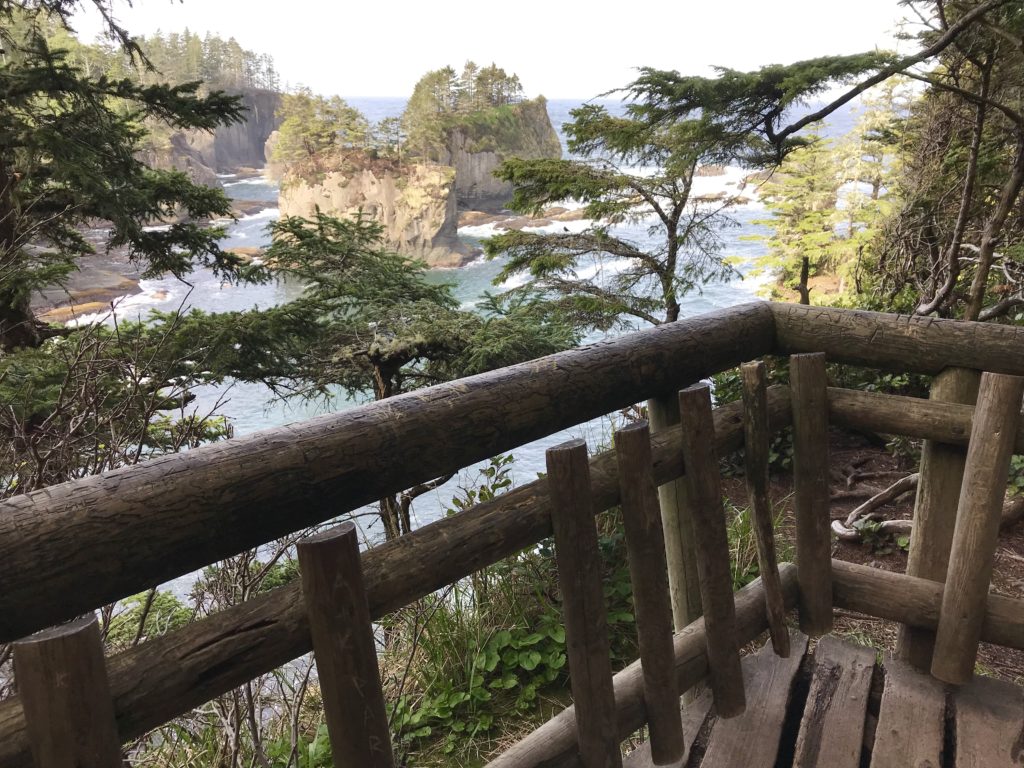
Viewing platform overlooking Cape Flattery
“We hunted in those caves for seals,” Vince explained. I was dumbfounded when he said they took their canoes through the tumultuous, confused sea. “We would wait for low tide, and a calm day, then paddle silently into the cave, catching the seals off-guard.”
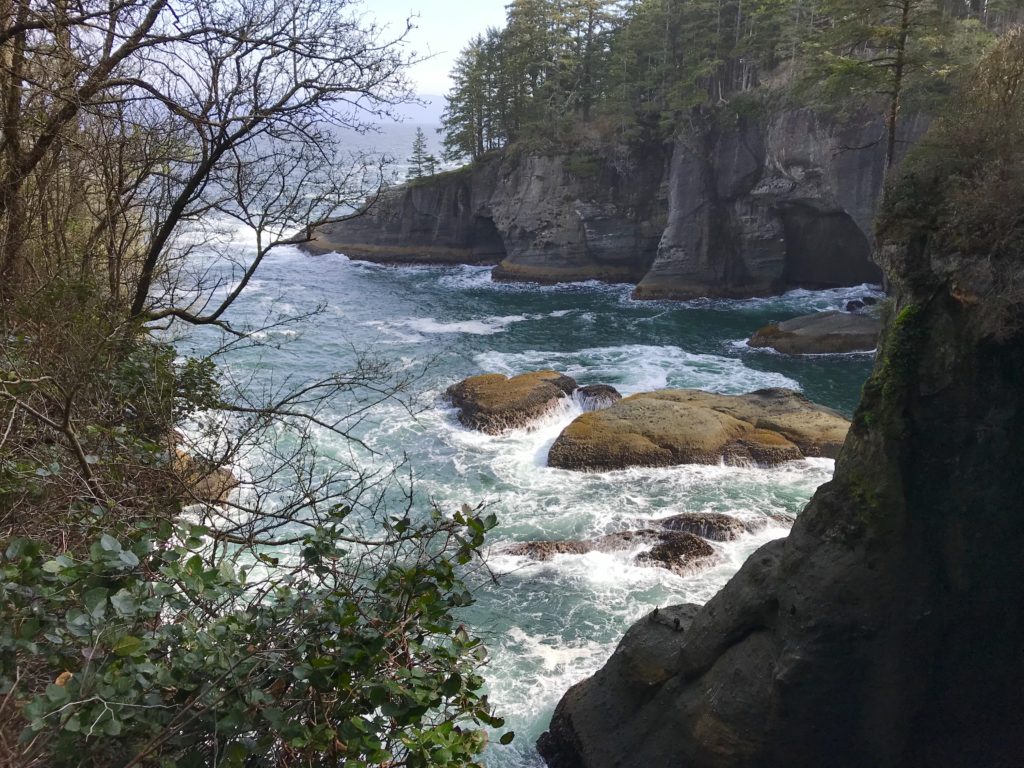
Cape Flattery caves
We had visited the Makah Museum the afternoon before, learning that the tribe were, and are, whaling people. We saw a whaling canoe with a skeleton of a gray whale hanging from the ceiling to illustrate the size and challenge they faced every time they paddled out to sea for a hunt.
We also learned that in order to retain their whaling rights and protect the health and welfare of their people, the Makah ceded 300,000 acres of tribal land to the US government in a treaty signed in 1855. Today, they have 30,000 acres and continue to buy more acreage as possible. “We kept the upper Northwest land because it was closest to the ocean and water is our garden,” Vince shared.
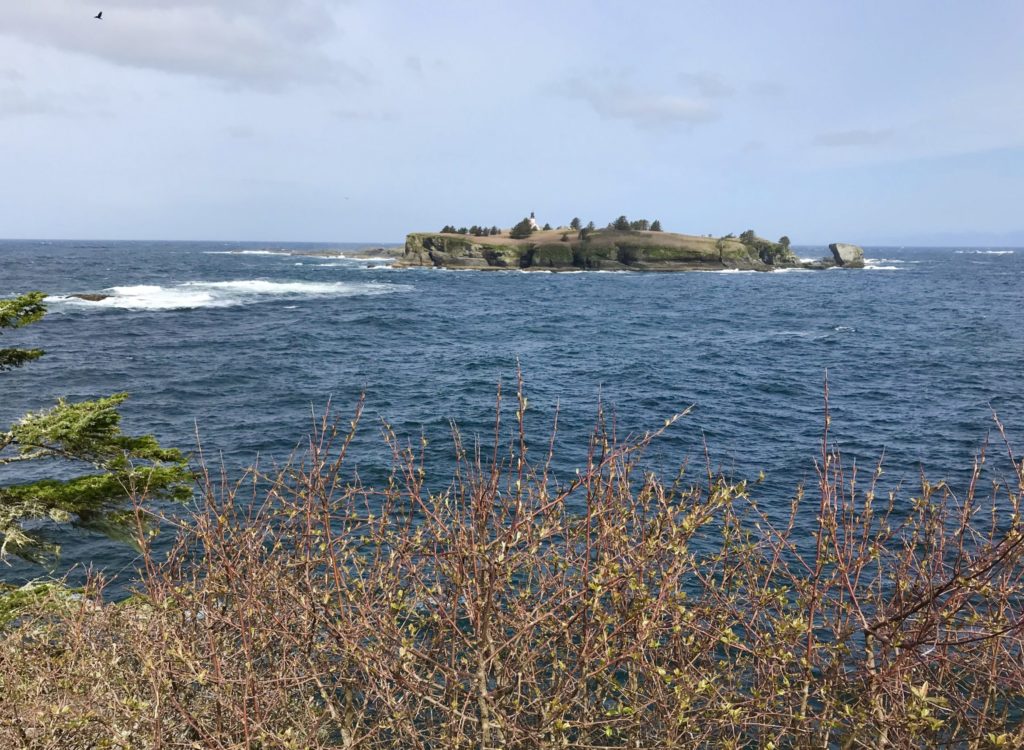
An eagle soars over Tatoosh Island
As we continued heading westward on our hike, I reflected about the privilege of walking on ancestral land and to do so with a Makah tribal member. Vince broke through my reverie announcing, “We’re now at the most northwestern spot of the contiguous US”—as the Makah say, “the beginning of the world.” This was a bucket list experience to check off for my friend and me. Snapshots were taken, grinning from ear-to-ear, with Tatoosh Island looming in the distance.
We walked the mile or so back to our car at a leisurely pace, mostly in silence, occasionally meeting people on the trail, and appreciating the sacred, ancient beauty of the forest.
As my friend and I were driving out of Neah Bay, a pair of bald eagles flew overhead for several minutes, bidding us a special Makah farewell.

